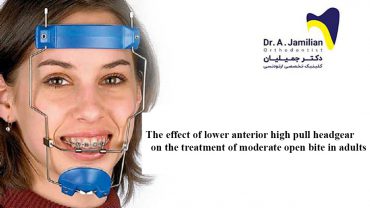Emami Meibodi Sh, Jamilian A, Showkatbakhsh R. The effect of anterior inclined plane treatment on the dentoskeletal of Class II division I patients. J Indian soc pedod prev dent Jul-Sep 2007; 25 (3): 130-132
Abstract
Most of Class II malocclusions are due to underdeveloped mandible with increased overjet and overbite. Lack of incisal contact results in the extrusion of the upper and lower anterior dentoalveolar complex, which helps to lock the mandible and prevent its normal growth and development, and this abnormality is exaggerated by soft tissue imbalance. The purpose of this study was to evaluate the skeletal and dental changes in patients treated with anterior inclined plane appliance in growing patients with moderate Class II Division 1 having deep overbite. In this study, 25 patients, including 15 girls and 10 boys, with a mean age of 9 +/-1.2 years were selected; all of them presented with moderate Class II deep bite with increased overjet and normal or horizontal growth pattern. Pre- and post-treatment X-rays and photos for an average of 8 months were taken. The statistical assessment of the data suggested that there were no significant changes in the vertical skeletal parameters. The mandibular incisors were protruded, whereas the maxillary incisors were retruded. Overbite and overjet were also reduced. There was significant increase in the mandibular length. The results revealed that in mixed dentition patients, the inclined plane corrected Class II discrepancies mostly through dentoskeletal changes.






